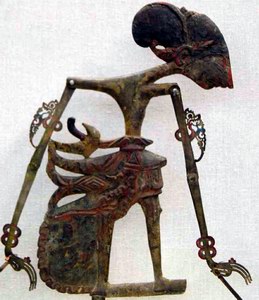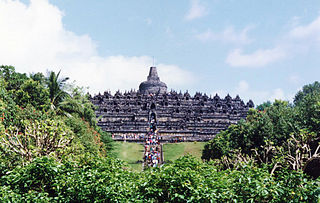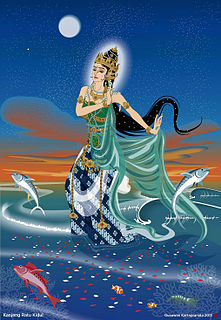 W
WIn the Bible, the name Azazel appears in association with the scapegoat rite; the name represents a desolate place where a scapegoat bearing the sins of the Jews during Yom Kippur was sent. During the end of the Second Temple period, his association as a fallen angel responsible for introducing humans to forbidden knowledge emerged due to Hellenization, Christian narrative, and interpretation exemplified in the Book of Enoch. His role as a fallen angel partly remains in Christian and Islamic traditions.
 W
WBawang merah dan bawang putih is a popular traditional folklore originated from Nusantara, about two siblings with opposite characters; one good and one bad, and an unjust step mother. The folklore has the same theme and moral as the European folktale Cinderella.
 W
WDamarwulan is a Javanese legendary hero who appears in a cycle of stories used in the performance of wayang klitik, as well as Langendriya and ketoprak. These stories tell of the struggles between the Majapahit and Blambangan kingdoms, in which Damarwulan gains honor. The stories are especially popular in East Java.
 W
WDewi Sri or Shridevi, Dewi Sri) is the Javanese, Sundanese, and Balinese pre-Hindu and pre-Islamic Goddess of rice and fertility, still widely worshiped on the islands of Java, Bali and Lombok, Indonesia.
 W
WKeong Emas is a popular Javanese folklore about a princess magically transformed and contained in a golden snail shell. The folklore is a part of popular Javanese Panji cycle telling the stories about the prince Panji Asmoro Bangun and his consort, princess Dewi Sekartaji.
 W
WNyai Roro Kidul is an Indonesian Goddess of the sea. She is the Queen of the Southern Sea in Sundanese and Javanese mythology.
 W
WThe Panji tales are a cycle of Javanese stories, centred around the legendary prince of the same name from East Java, Indonesia. Along with the Ramayana and Mahabharata, the tales are the basis of various poems and a genre of wayang known in East Java as wayang gedhog. Panji tales have been the inspiration of Indonesian traditional dances, most notably the topeng (mask) dances of Cirebon and Malang, as well as gambuh dance-drama in Bali. Especially in the environs of Kediri, the suggested homeland of the tales of Panji, local stories grew and were connected with the obscure legendary figure of Totok Kerot. Panji tales have spread from East Java (Indonesia) to be a fertile source for literature and drama throughout Indochina Peninsula and Malay World as well.
 W
WThe Legend of Roro Jonggrang is a Javanese popular legend (folktales) from Central Java telling the story of love and betrayal, the warrior and the cursed princess. It also explains the mythical origin of Ratu Boko palace, Sewu temple, and the Durga statue in Prambanan temple compound. The title Roro is an ancient honorific title to address unmarried princesses and female nobility, thus the name Rara Jonggrang in Javanese means 'slender maiden'.
 W
WSi Pitung was a 19th-century bandit in Batavia, Dutch East Indies. His exploits have since become legendary, with numerous accounts of his life, deeds, and death.
 W
WSingo Ulung is one of the original traditional dances from Bondowoso regency. The dance is played by two people in a lion-like costume and accompanied by music. This traditional dance originally came from Blimbing village, Klabang district, Bondowoso Regency, East Java, Indonesia
 W
WWarak ngendog is a mythical creature resembling a rhinoceros carrying eggs on its back. This creature, celebrated during the Dugderan Festival held annually on September 23 a few days before the holiday of Ramadan, is believed to represent three different ethnic groups in Semarang: Javanese, Chinese and Arabian. Its head is like a dragon (Chinese), its body is the combination of buraq and goat (Javanese).